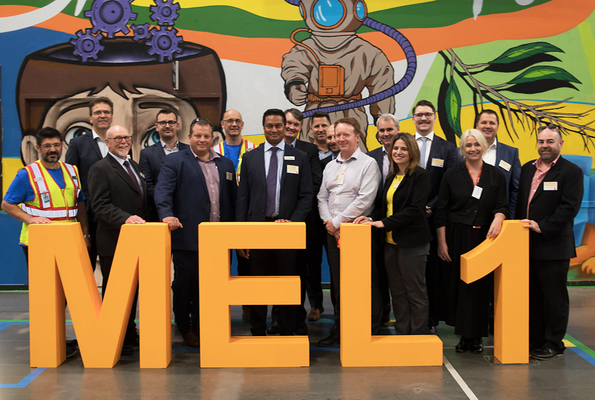No car keys. No phones. No bags. No photography.
Security was cordial but tight as Star News joined members of Greater Dandenong Chamber of Commerce for a rare look ‘under the hood’ at Amazon’s Dandenong South warehouse.
Until now, journalists – despite their requests – had not been inside the online behemoth’s ‘fulfillment centre’ MEL 1.
It’s understably protective of its trade secrets but not shy of its customer-centric language such as ‘fulfillment centre’.
Multiple slogans such as ‘Customer Obsession’ are emblazoned on the staffroom’s wall.
“We’re absolute that we keep that promise every day,” Australian operations manager Robert Bruce tells us.
He tells us Dandenong South was chosen as the first Australian base because of “great infrastructure” and “great talent”.
Particular pride is taken in its multicultural workforce, he says.
“We’re here for the long-term.”
Then it was on with the tour to see “what happens when you click on that button on that application”.
Prior to entering, visitors’ mobile phones, car keys and bags were boxed up and sealed as if they were to be shipped off with the orders.
Thankfully, they were delivered back to their owners on the way out.
Then the tour groups saw the mind-boggling rows and rows of shelves that cover much of the 24,000-square-metre floor.
The shelving system that houses seemingly unrelated items together seems like chaos.
But we are assured there’s science behind it.
It ensures space efficiency and a greater variety of goods being close to hand for the staff ‘pickers’.
Another surprise was that robots don’t retrieve the products. Humans retrieve them on foot guided by software that shows the most direct route.
Our tour guide tells us that on an average eight-hour shift, a picker could cover 25 kilometres.
Like any other warehouse, they are expected to meet ‘target times’, our guide says. The workers have no need for gym memberships, he jokes.
It’s an operation finely tuned for prompt deliveries – something the company prides itself on.
Each order, each workstation is tracked on a six-screen Command Centre in the heart of the warehouse.
The in-house imaging studio captures photos of every item for much of the online catalogue.
The photos must be clear and detailed, so customers know exactly what they’re ordering, we’re told.
Here, even the flat-pack items are assembled for imaging. And then carefully disassembled and repacked for sale.
There have been accusations of it being a ‘cultish’ regime with punishing performance targets, low pay rates and high casualization of the workforce.
“We don’t recognise these allegations as an accurate portrayal of activities in our buildings,” Amazon tells us after the tour.
A spokesperson stated it had a “mixture of permanent and agency staff”, “reasonable” productivity targets and “above award rates”.
During the cheery tour, business guests had glowing impressions of the “smiling, friendly and helpful” staff on hand. There was fascination in the productive culture and systems.
Even a short glimpse makes you appreciate that Amazon is another world from many other workplaces.









